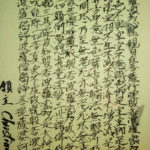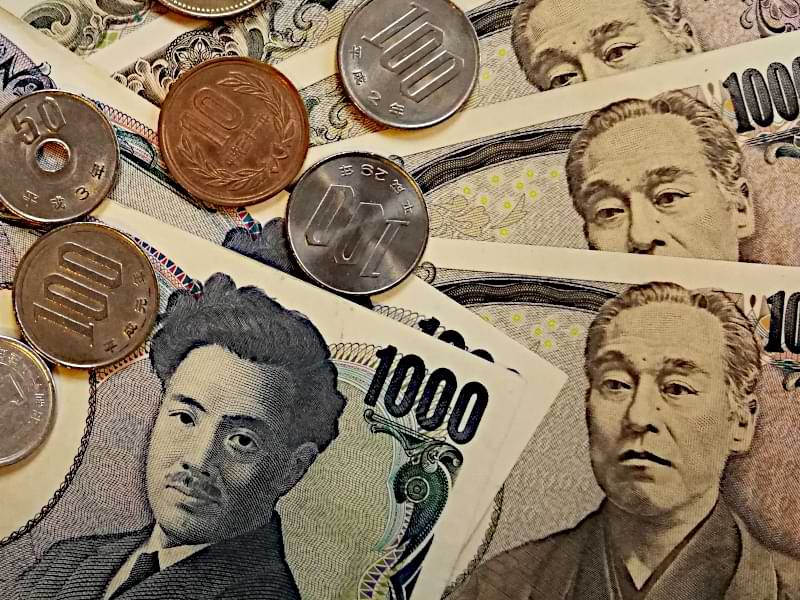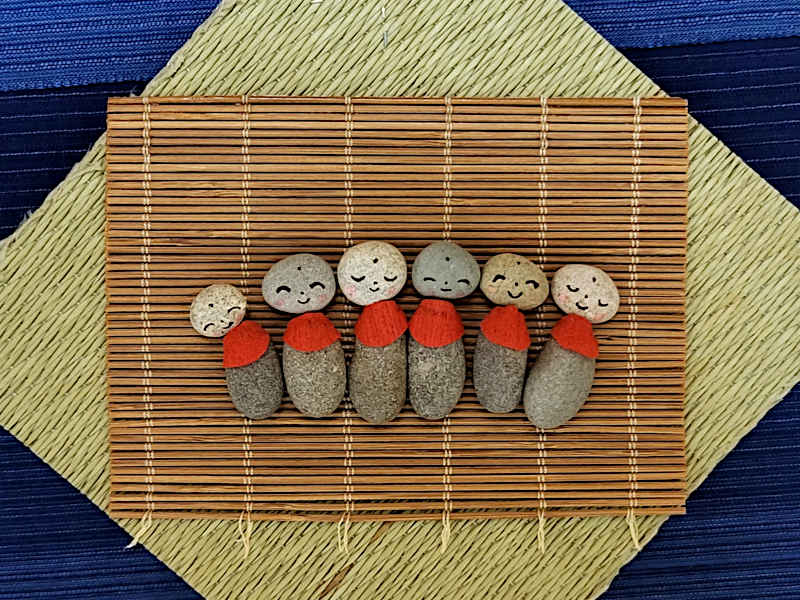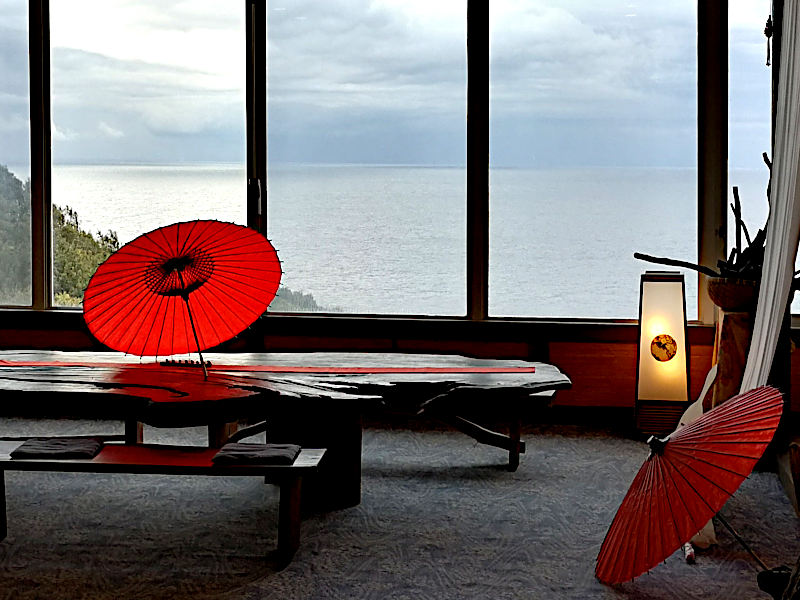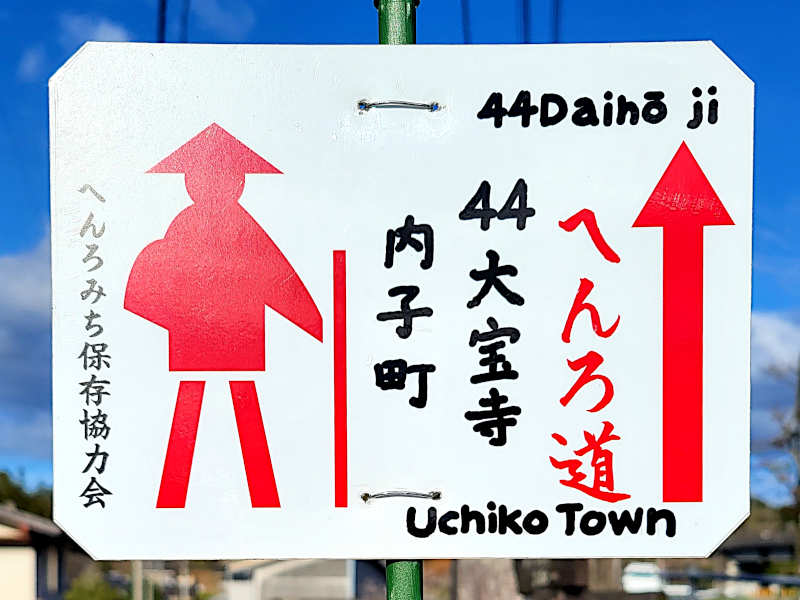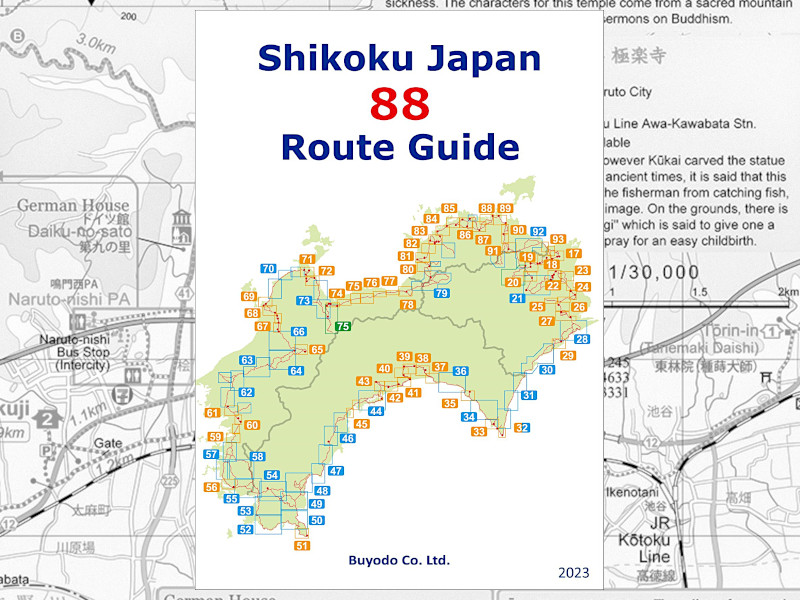Glossary
Overview
Shikoku Henro Glossary
A
- arukihenro 歩き遍路
- Walking pilgrim.
B
- bangai 番外
- Temple that is not one of the 88 main temples.
“Ban” means number and “gai” means outside. Bangai could mean any of the hundreds of temples and shrines in Shikoku other than the 88 main temples. However, when bangai is talked or written about today in connection with the Shikoku Pilgrimage, it usually refers to the 20 temples historically associated with the pilgrimage route. The bangais are not visited by many pilgrims, often because of time limitations. - bekkaku 別格
- “More correct” name for the 20 subsidiary temples, in the meaning of exceptional, out of line.
D
- Daishi 大師
- “Great teacher”, this refers to Kobō Daishi.
- daishidō 大師堂
- Hall dedicated to the worship of Kōbō Daishi. Pilgrims pray their sutras in front of this hall.
- dōgyō 同行
- Fellow pilgrims, companions on the pilgrimage.
- dōgyōninin 同行 二人
- “Two on the way together”. Meaning that a pilgrim never walks the Shikoku pilgrimage alone. He is accompanied by Kūkai.
“dōgyōninin 同行 二人” will be encountered daily on your walk. On signposts and signs, on your pilgrimage equipment and at temples. - dōgyōsan 同行さん
- Polite term, address for a fellow pilgrim on the pilgrimage.
G
- gasshō 合掌
- Greeting gesture in Japanese Buddhism. The palms are brought together in front of the chest. The fingers are parallel, touching and pointing upwards. The gaze is lowered. A bow is made in this posture.
- gyaku uchi 逆打ち
- Walking counter-clockwise and visiting the temples in descending order. In this direction it is laborious and difficult to find the right paths. The signposting of the paths is limited.
H
- hakui 白衣
- White shirt worn by pilgrims on their journey. With long sleeves (hakui) or as a sleeveless shirt (oizuru).
- henro 遍路
- Pilgrim, but is also often used in the sense of “pilgrimage”. Henro can thus mean both “pilgrim” and “Shikoku pilgrimage”. Often written in hiragana: へんろ.
- hondō 本堂
- Main hall in the temple complex. Dedicated to the worship of a Buddhist deity. Pilgrims pray their sutras in front of this hall.
I
- ikkoku mairi 一国参り
- Visit only the temples of one province at a time. Shikoku has a total of four provinces.
J
- jun uchi 順打ち
- Pilgrimage clockwise and visiting temples in ascending order. Especially for a first pilgrimage on Shikoku, this way of pilgrimage is highly recommended. The path is well signposted in this direction. An attentive walker will rarely get lost.
- junrei 巡礼
- Pilgrimage. In general, not only in connection with Shikoku.
K
- kechigan 結願
- All 88 temples were visited. The order in which the temples were visited is not important. The 88th temple you visit is your “Kechigan Temple”. This can be the temple with the number 88, but also any other temple. Another interpretation is that Kechigan is achieved when all 88 temples have been visited and the return to the temple where the pilgrimage began has taken place. The “circle” is then closed.
- Kōbō Daishi 弘法大師
- Honorary title awarded posthumously to Kūkai by Emperor Daigo.
- kongōzue 金剛杖
- Walking stick for pilgrims made of wood. Imprinted with, among other things, “dōgyōninin 同行 二人”. Embodiment of Kūkai, who protects and supports the pilgrims on their way. The kongōzue is treated with great respect by the pilgrims. After arriving at the accommodation, the staff is cleaned at the lower end with water and placed in the overnight room. Legend has it that Kūkai once had to sleep under a bridge during his wanderings. The belief that he could still rest under a bridge today is widespread. In order to not disturb Kūkai there, the walking stick is not tapped when crossing a bridge.
- kugiri uchi 区切り打ち
- Walk the pilgrimage in parts. Every weekend, every annual holiday – walk a part. After an interruption, pilgrims continue their walk where it ended the last time. For the journey to the starting points and for the return journey from the end point, public transport is usually used.
N
niō 仁王- Guardian statues standing to the left and right of the gate of a Buddhist temple, protecting the temple from evil.
- niōmon 仁王門
- Gate through which a Buddhist temple complex is entered. The transition from the secular to the spiritual world. Guarded on the left and right by two niō, muscular and often fearsome guardian statues who protect the temple from evil.
- nōkyō 納経
- Stamp in the pilgrim’s book.
- nōkyōchō 納経帳
- Pilgrim’s book, in hardback. There is one page in the pilgrim’s book for each of the 88 temples. As proof of the temple visit, the page is stamped with three red stamps at the pilgrimage office and calligraphed with the name of the main deity of the respective temple in kanji. For further pilgrimages, the respective page in the pilgrimage book is stamped again, but no longer calligraphed.
- nōkyōsho 納経所
- Temple office.
O
- ohenro-san お遍路さん
- Polite form of address for a pilgrim.
- oizuru 笈摺
- White shirt worn by pilgrims on their journey. As a sleeveless shirt (oizuru) or with long sleeves (hakui).
- osamefuda 納め札
- Votive note left by a pilgrim. Visiting card left by a pilgrim at the temple. Also given to locals or fellow pilgrims as thanks for their support (settai).
S
sanmon 三門 oder 山門
Temple gate without the two guardian figures of the niōmon. Inscribed with the Japanese character 三門. In the literal meaning “three gates”. Or with the Japanese kanji 山門, also pronounced “sanmon”, the literal meaning in this case being “mountain gate”.
sendatsu 先達
Pilgrimage guide, with experience of pilgrimage on Shikoku.
settai 接待
Support for the pilgrims from the locals. For example, in the form of food, snacks, drinks, small amounts of money or handicrafts they have made themselves. The supporters thereby participate in the pilgrimage of the recipient.
shakyō 写経
Handwritten copy of a Buddhist sutra. Left at the temple by pilgrims.
- Shikoku byō 四国病
- Shikoku disease; Shikoku addiction. Term used in connection with pilgrims who walk the Shikoku pilgrimage route several times or with people who would like to walk the pilgrimage route again.
- Shikoku Hachijūhakkasho Reijōkai
- Shikoku Pilgrimage Temple Association.
- Shikoku hachijūhakkasho 四国八十八箇所
- Shikoku’s 88 sacred places; formal name for the pilgrimage on Shikoku.
- Shikoku henro 四国遍路
- Shikoku Pilgrimage.
- shōrō 鐘楼
- Bell tower. Visitors to the temple ring the bell once when entering the temple. Ringing it when leaving the temple brings bad luck.
- shukubō 宿坊
- Temple accommodation for pilgrims.
- sugegasa 菅笠
- Pilgrim’s hat, originally made of grass or rice straw. Helpful as protection against rain and sun. Can be kept on in the temple.
T
- temizuya 手水舎
- Well on the temple grounds from which temple visitors draw water with a ladle to wash their hands and rinse their mouths. Symbolic of external and internal purification.
- tōshi uchi 通し打ち
- Walking the whole pilgrimage without interruption. The traditional way.
- tsuyadō 通夜堂
- Free overnight accommodation in the temple for pilgrims.
Z
- zenkonyado 善根宿
- Free private overnight accommodation for pilgrims.
Shikoku Travel Glossary
B
- bijinesu hoteru ビジネスホテル
- Business Hotel. Inexpensive hotel for business travellers.
- buntan ブンタン
- Slightly sour, vitamin-rich citrus fruit grown in Kōchi Prefecture.
The fruits, about the size of a grapefruit, taste great and are an excellent source of vitamins for pilgrims.
Outdoor-grown buntan are sold from December to April. The early fruits are still bitter. Buntan taste best in March.
Greenhouse-grown buntan are sold from October to January and are more expensive than the outdoor fruit.
buntan is my favourite fruit, but many other citrus fruits are grown on Shikoku: konatsu (小夏), hassaku, zabon, natsu-mikan …
It’s worth trying.
The March buntan are a great gift for Japanese friends outside Shikoku. Most shopkeepers organise the shipping of a buntan package within Japan at prime cost.
H
- hoteru ホテル
- Hotel.
I
- inoshishi いのしし
- Wild boar.
K
- konbini コンビニ
- Japanese short form for “convenience store”.
- minshuku 民宿
- Family pension.
- moningu setto モーニングセット
- Breakfast service. Many cafés and coffee shops offer an inexpensive breakfast in the morning. Usually includes a hot drink (coffee or tea), bread and butter, egg and salad.
O
- onsen 温泉
- Thermal bath fed by a natural hot spring. Often indicated on signs and maps as 湯 or ゆ (yu = hot water).
R
- ryokan 旅館
- Traditional Japanese accommodation that usually offers more services and comfort than a minshuku.
S
- sanuki udon さぬきうどん
- Udon are thicker noodles made from wheat flour, table salt and water. Sanuki is the former name of what is now Kagawa Prefecture.
T
- tsuyu 梅雨
- Rainy season. On Shikoku, the rainy season usually begins in early June. Accordingly, the most rainy days of the year are in June and July. According to the Japan Meteorogical Agency, in 2023 the start of the rainy season on Shikoku was the 29th of May.
For even more inspiration and information go to:
